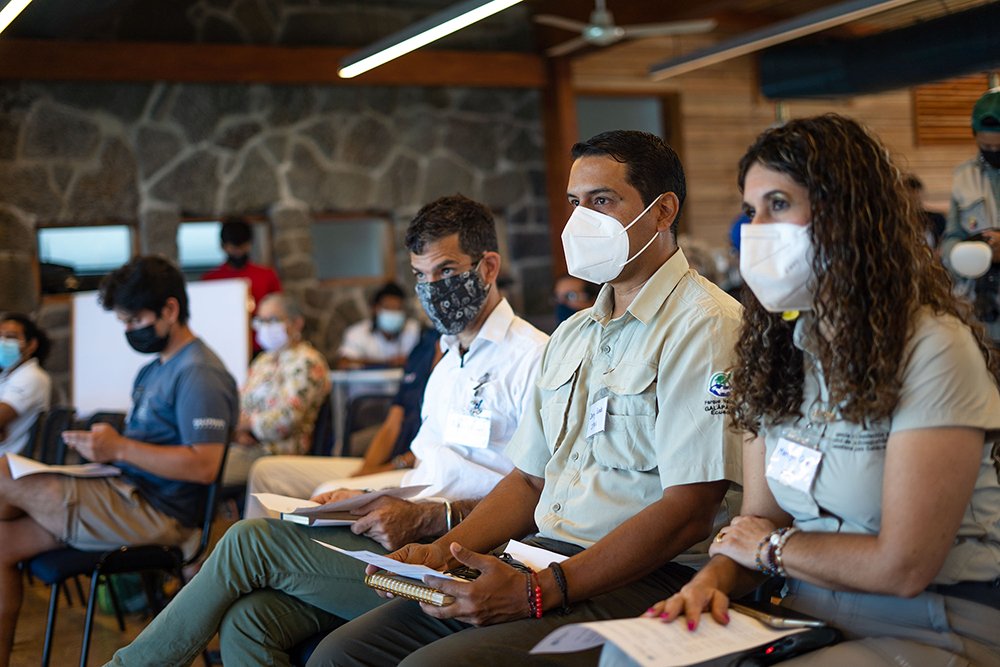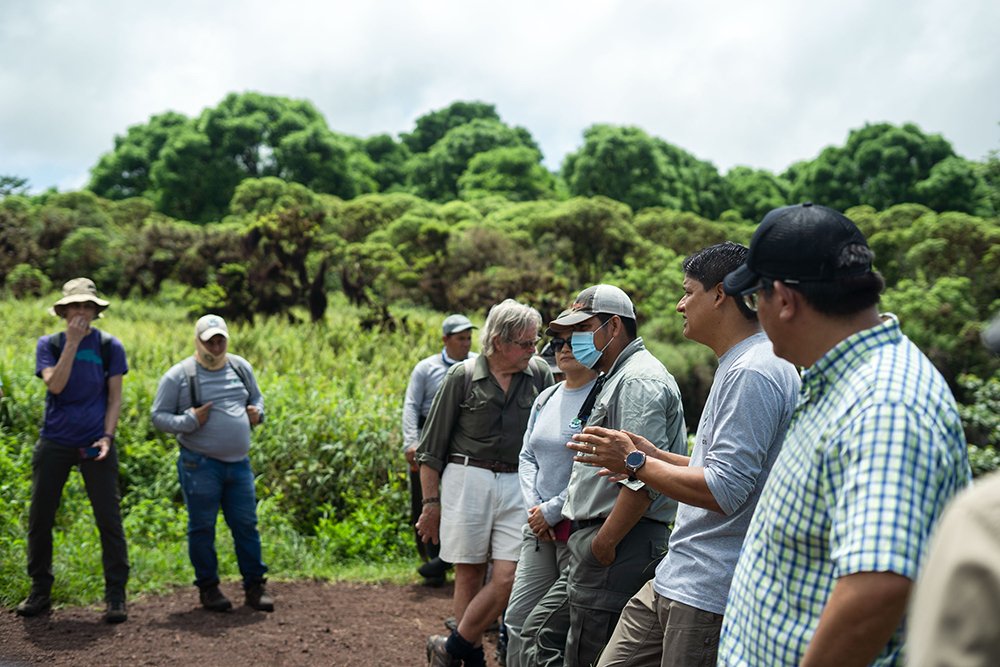Workshop on advances in the development of a biological control agent for the invasive blackberry in Galapagos ends successfully
From 22 to 24 of March, 2022, the Charles Darwin Foundation (CDF) and the Galapagos National Park Directorate (GNPD) held the second "Participatory workshop on the development of an agent for the biological control of the invasive blackberry (Rubus niveus) on the Galapagos Islands” in the conference room of the CDF Inspiration Complex. The event was attended by local and regional authorities, researchers from several universities, public and private institutions, organizations dedicated to studying invasive species in Ecuador, and experts from the Centre for Agriculture and Bioscience International (CABI) in the UK.

During the inauguration, Rakan Zahawi, executive director of the CDF, said, "The most problematic plant species on the islands is blackberry. Introduced in 1968, blackberry is now seriously degrading the Scalesia forest in Galapagos".
Likewise, Danny Rueda, director of the GNPD, mentioned that "The biggest challenge is to find a solution that includes a biological control agent for this invasive species".
On the first day of the workshop, presentations showed the work done over the last eight years about the damage this invasive species causes to endemic plants, such as Scalesia, and animals, such as the little vermillion flycatcher (Pyrocephalus nanus).
"The Scalesia forest on Santa Cruz has been reduced to only 3% of its original distribution and every year we are losing about 5% of the current distribution to the blackberry," says CDF ecologist Heinke Jäger.
"If the Scalesia forest disappears, this will have a huge impact on the little vermillion flycatcher, as 80% of its nests are in these trees," said CDF ornithologist Agustín Gutiérrez.

In addition, the magnitude of the problem was highlighted by showing data on the extent of the areas invaded by blackberry and the high costs of its manual and chemical control, which is not sustainable in the long term. Finally, CABI experts provided information on successful case studies with biological control agents in the world and on the advances in the search for a biological control agent for blackberry in Galapagos.
"The genetic variety of the blackberry Rubus niveus present in Galapagos originates from southern China and we are increasing efforts in this particular area to search for a rust fungus specific to the invasive Galapagos blackberry" said CABI plant pathologist Marion Seier.
On the second day of the workshop, participants went on a field trip to "Los Gemelos", to witness the damage that invasive blackberry is causing to the Scalesia forest is clearly visible, as well as the hard work the GNPD is carrying out there to protect the endemic Scalesia pedunculata.

"These workshops allow public and private institutions to see the problems caused by the introduction of species that do not belong in this ecosystem. The blackberry really is a big problem, so I congratulate the CDF and GNPD who are constantly seeking funds to control this pest," said Mauricio Zambrano, an official from the Agency for Regulation and Control of Plant and Animal Health (AGROCALIDAD), who travelled from Quito to Galapagos to attend the event.
On the last day of the workshop, presentations explained the protocols and regulations in place for the importation of a biological control agent to Ecuador and Galapagos. There were also working groups to discuss alliances between institutions, communication with the community and monitoring of the project's progress, which are fundamental to direct the next steps of the project.
More than 50 people participated in person and 18 people virtually, to achieve the objective of this participatory workshop, which was to report on the advances in the search for a biological control agent for the invasive blackberry in Galapagos.

The workshop was held with the support of the Fund for the Control of Invasive Species in Galapagos (FEIG) and the Fund for Sustainable Environmental Investment (FIAS), and also the Ministry of Environment, Water and Ecological Transition (MAATE) and the Galapagos National Park Directorate.




